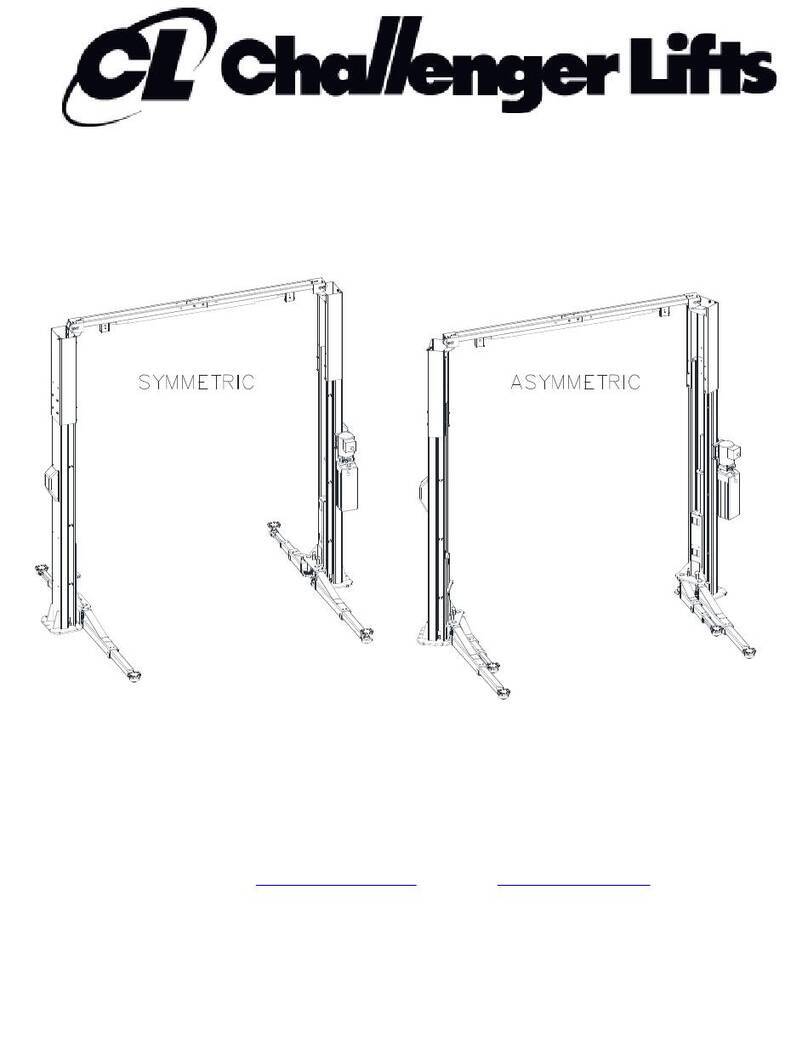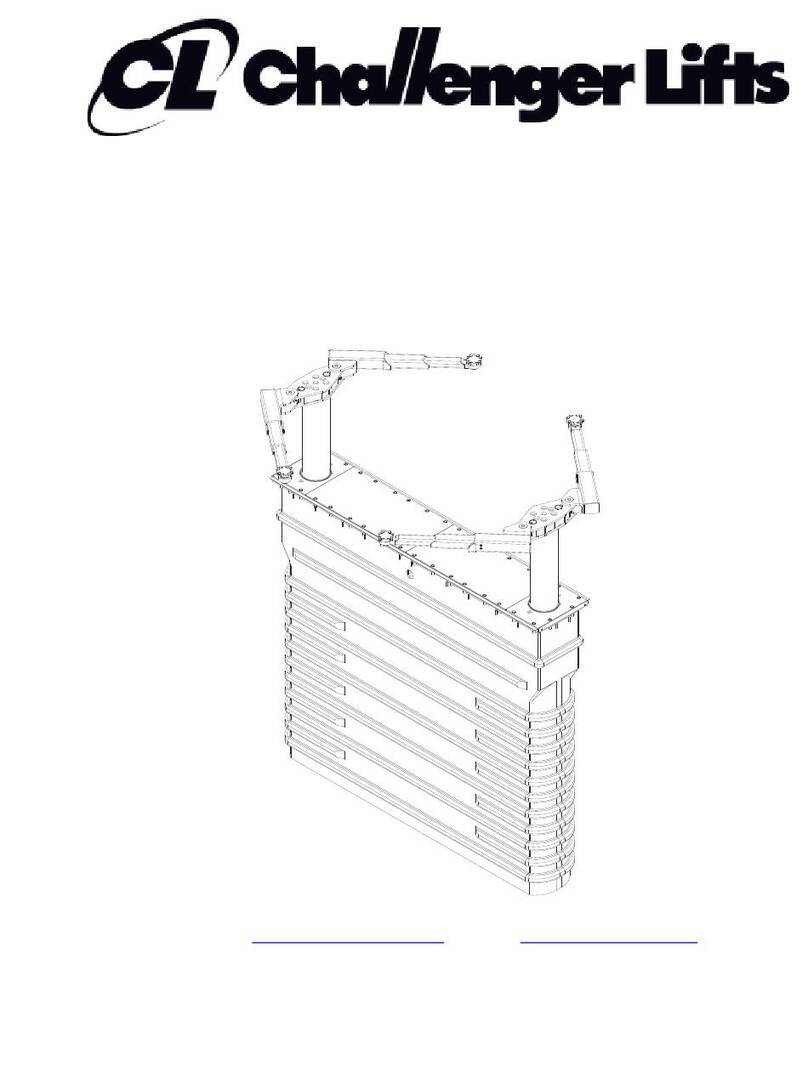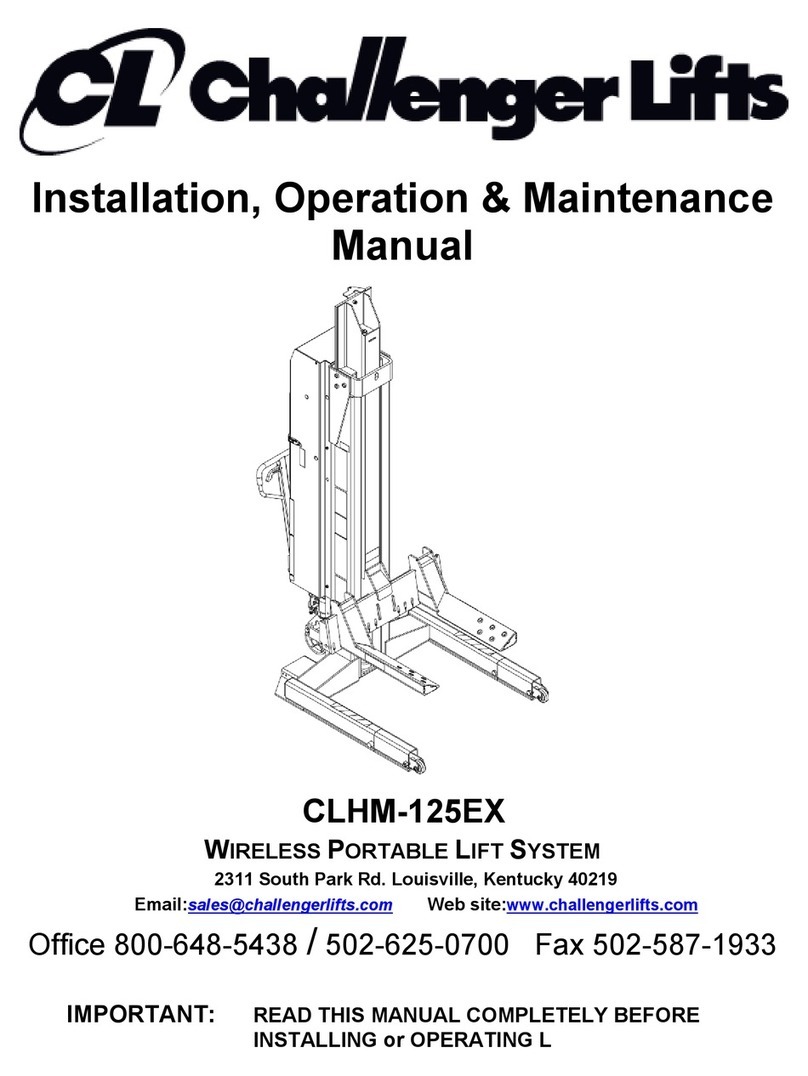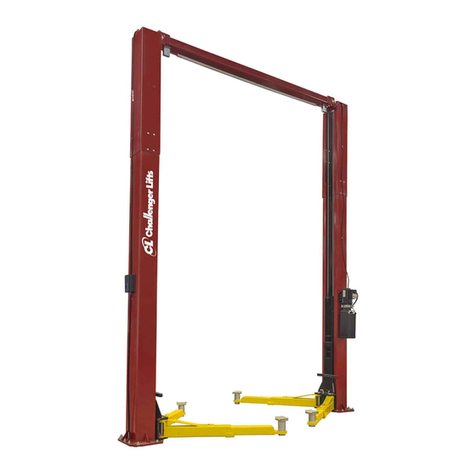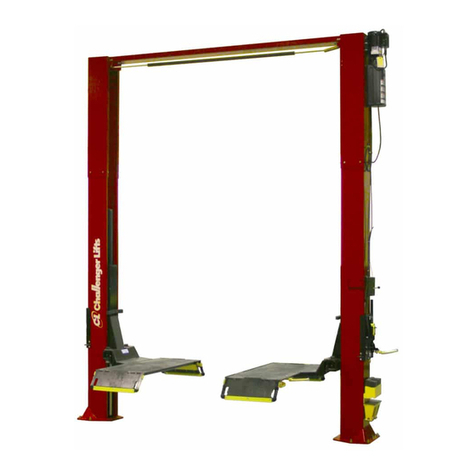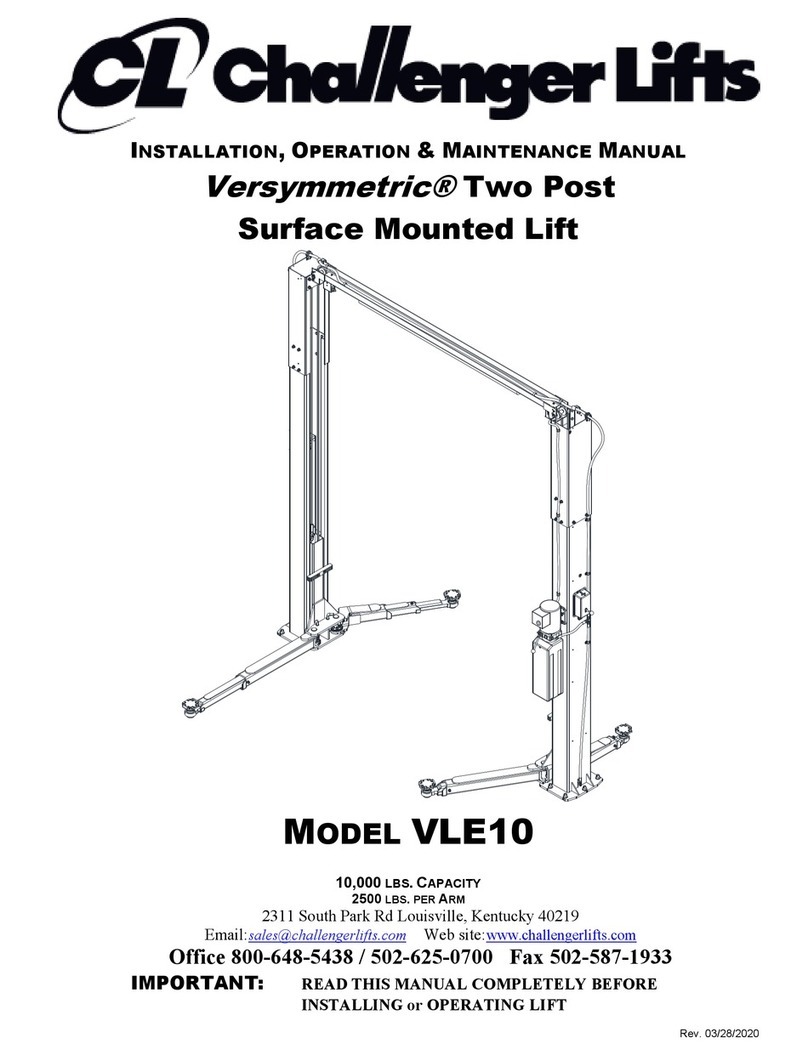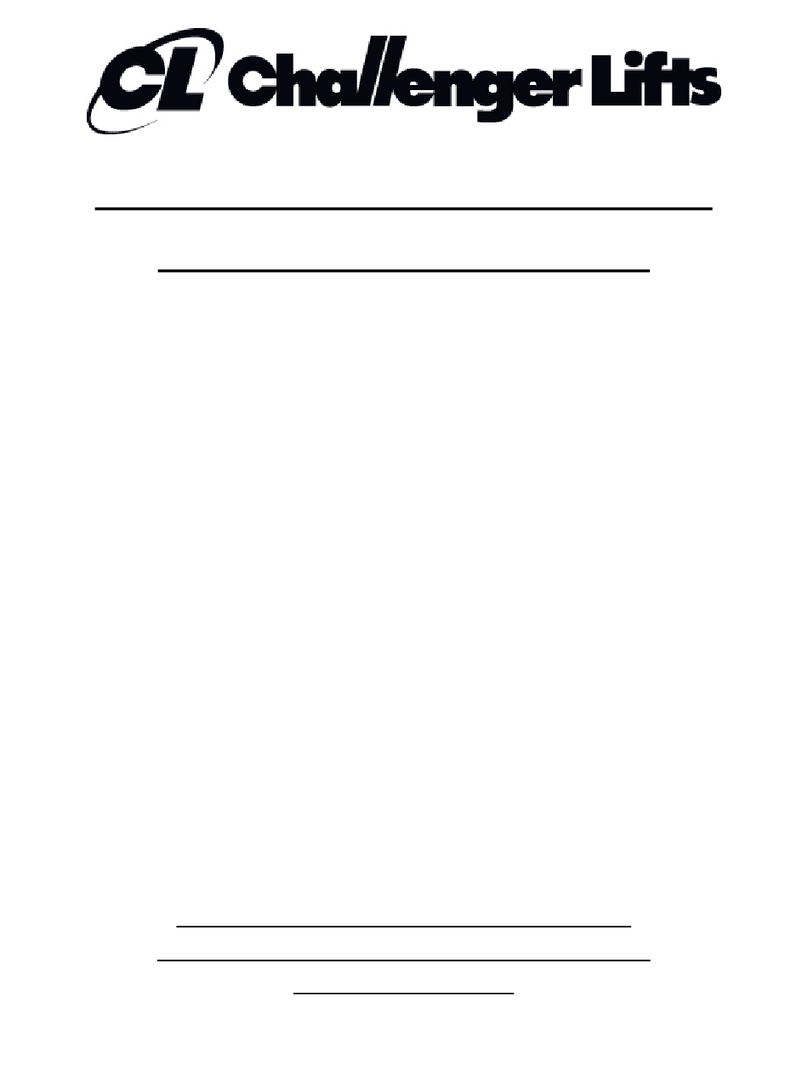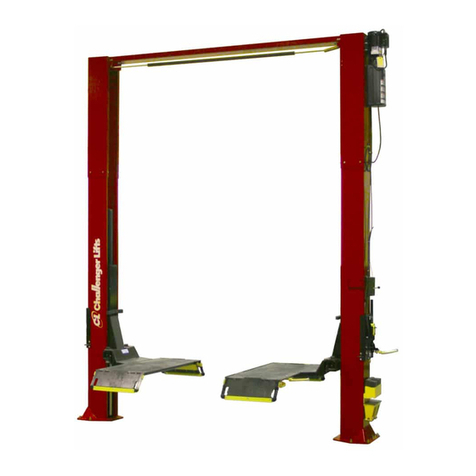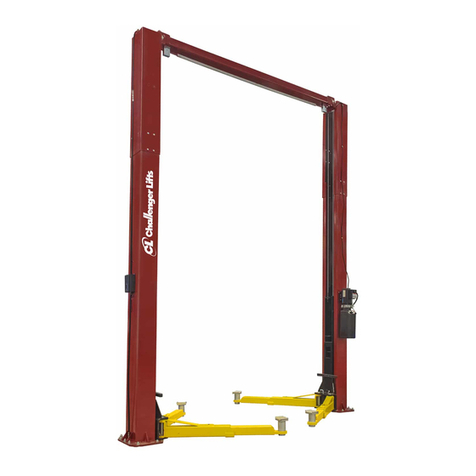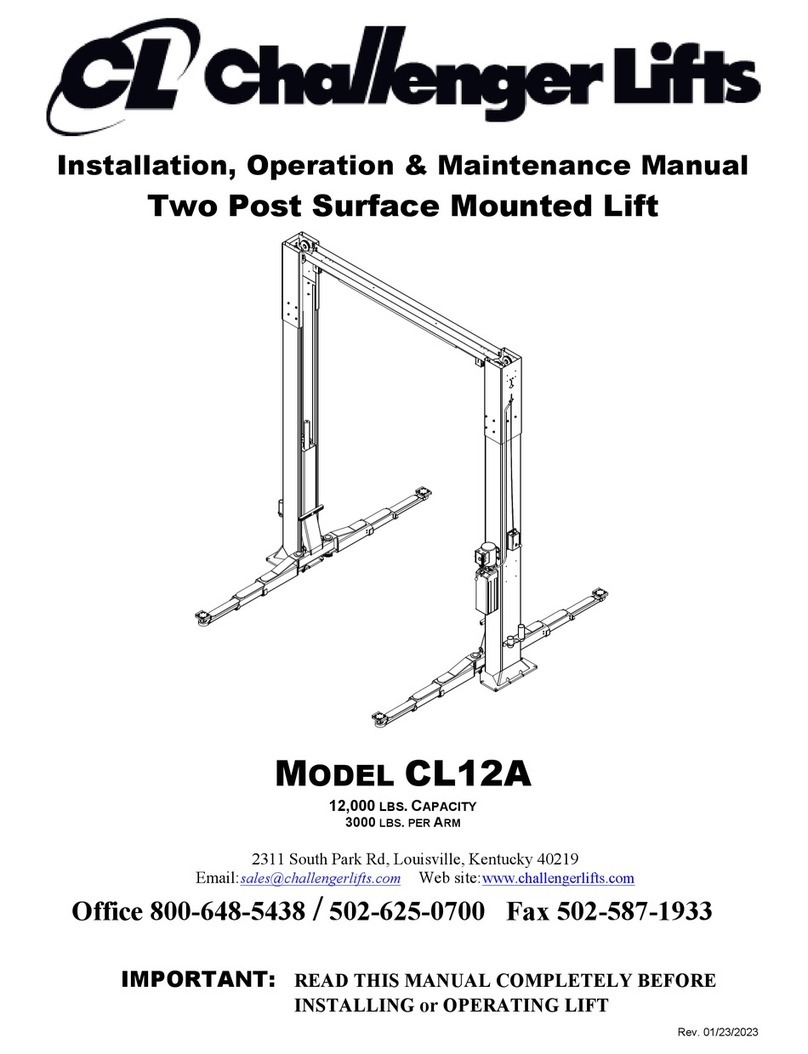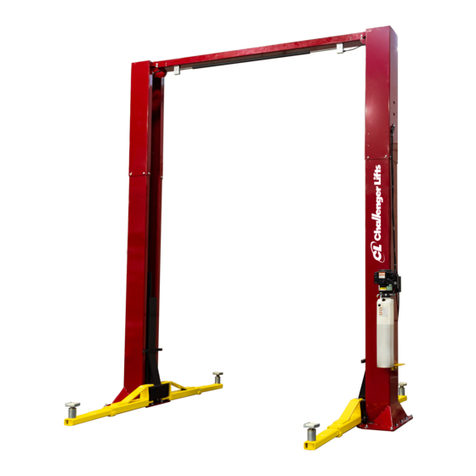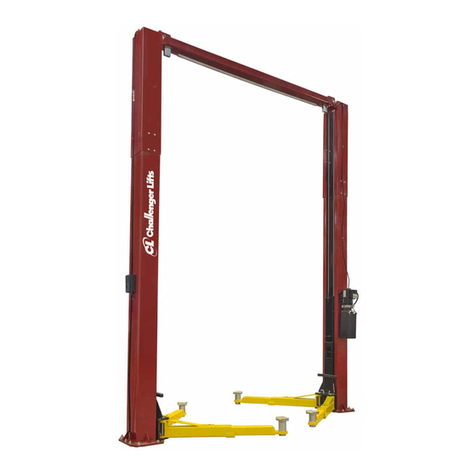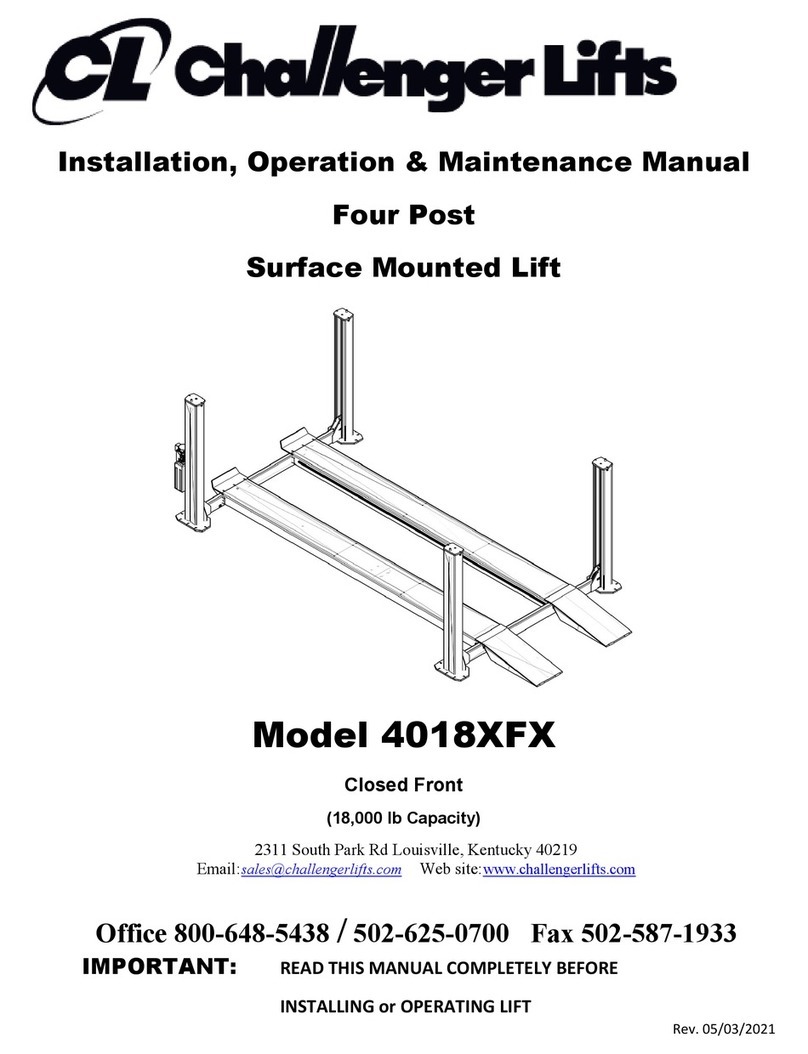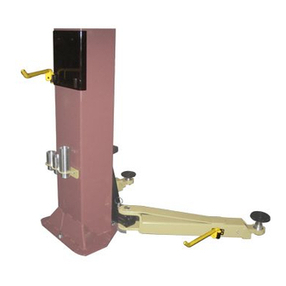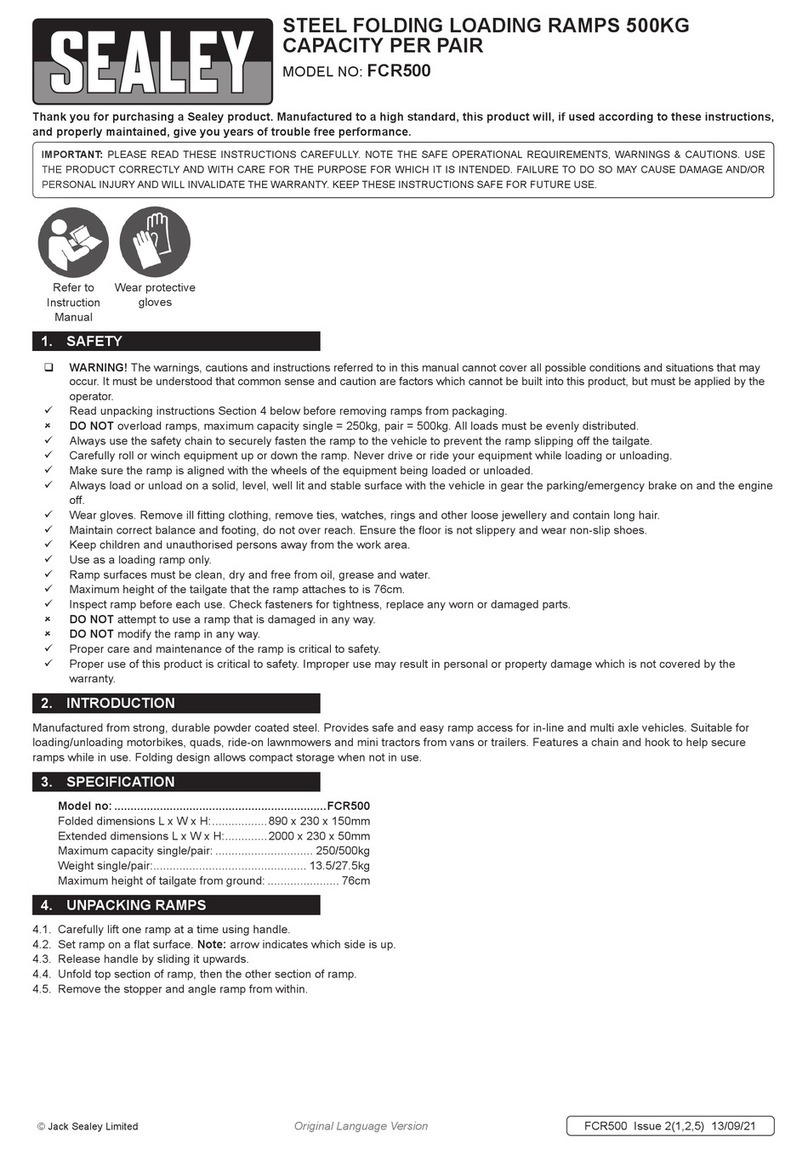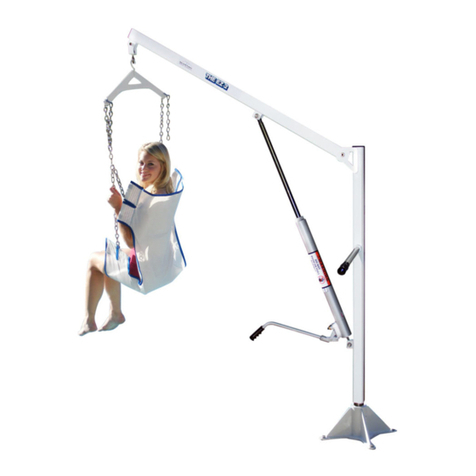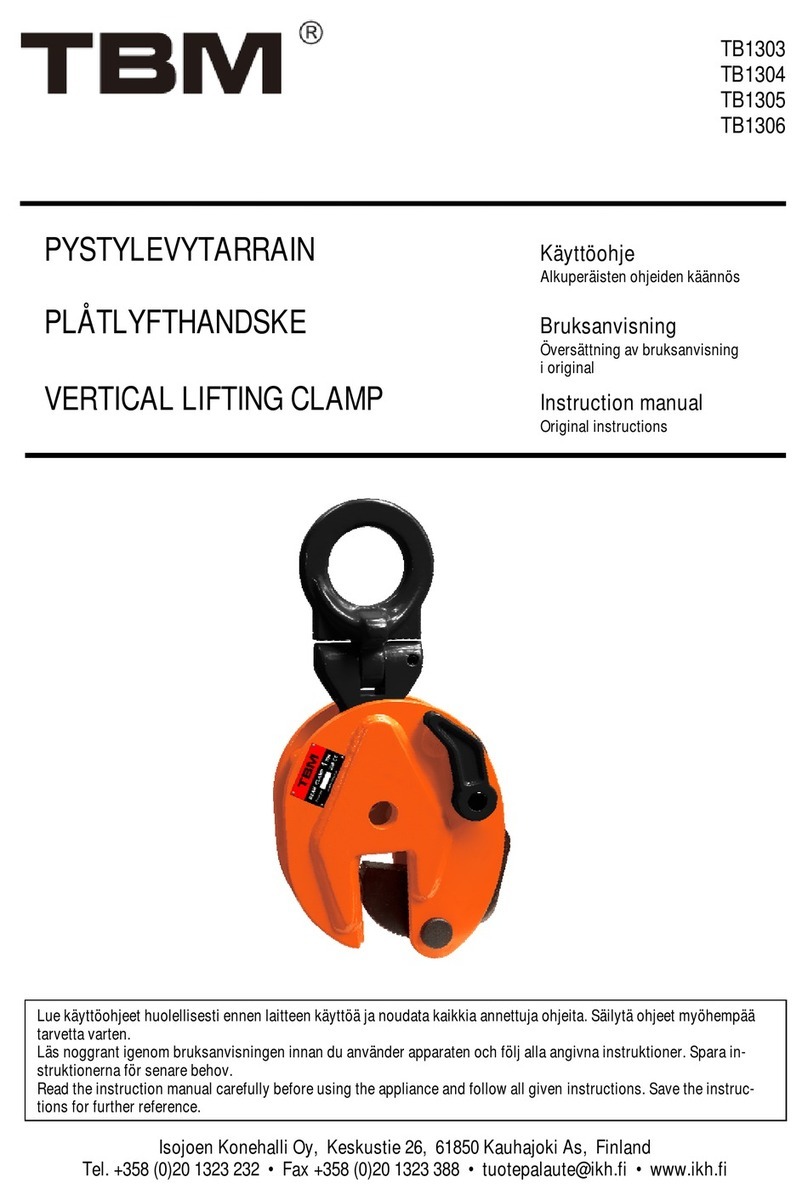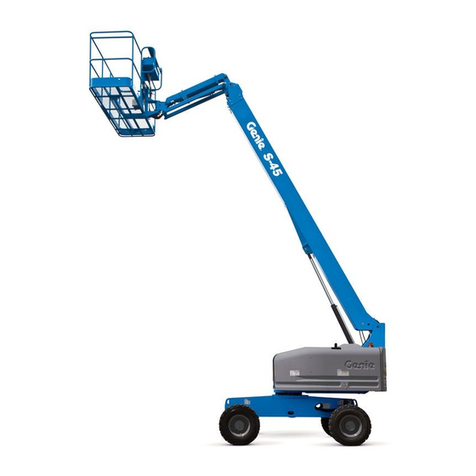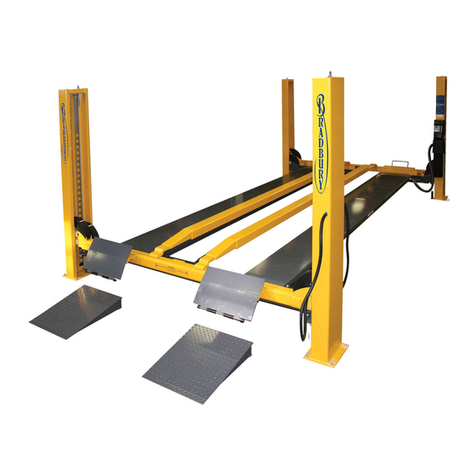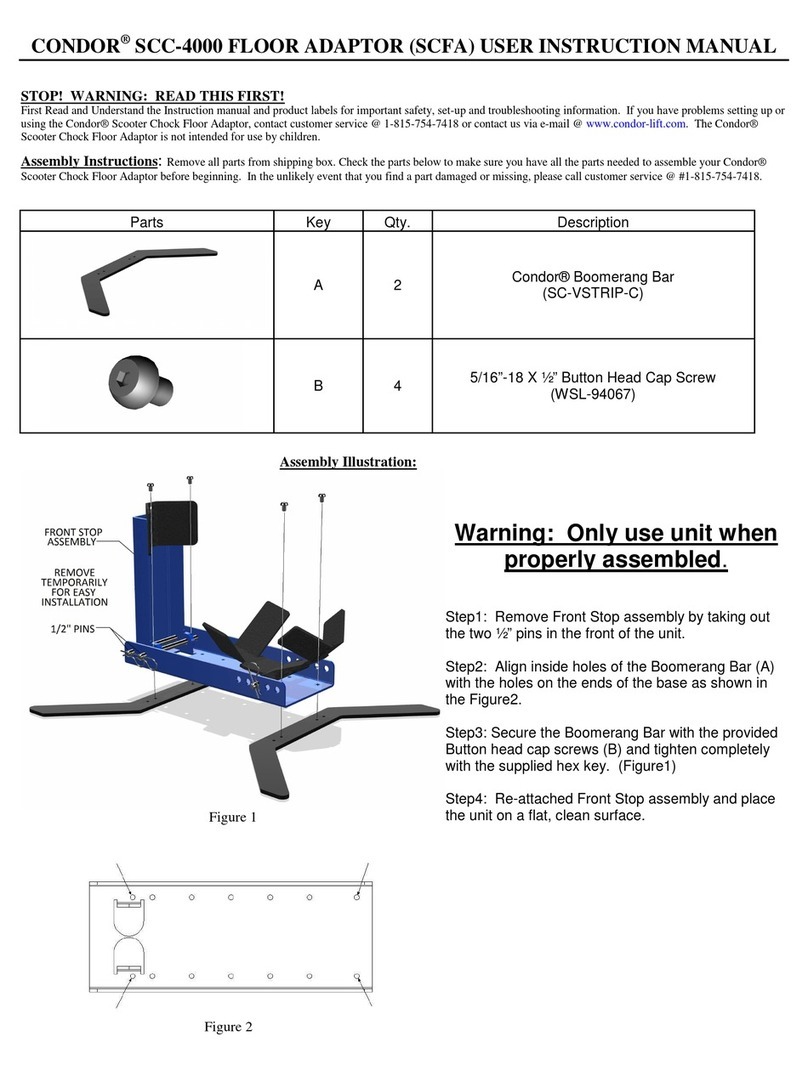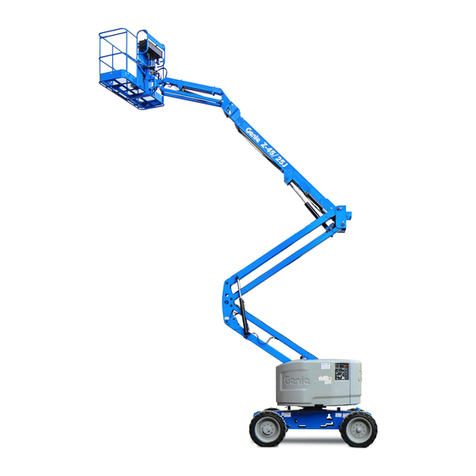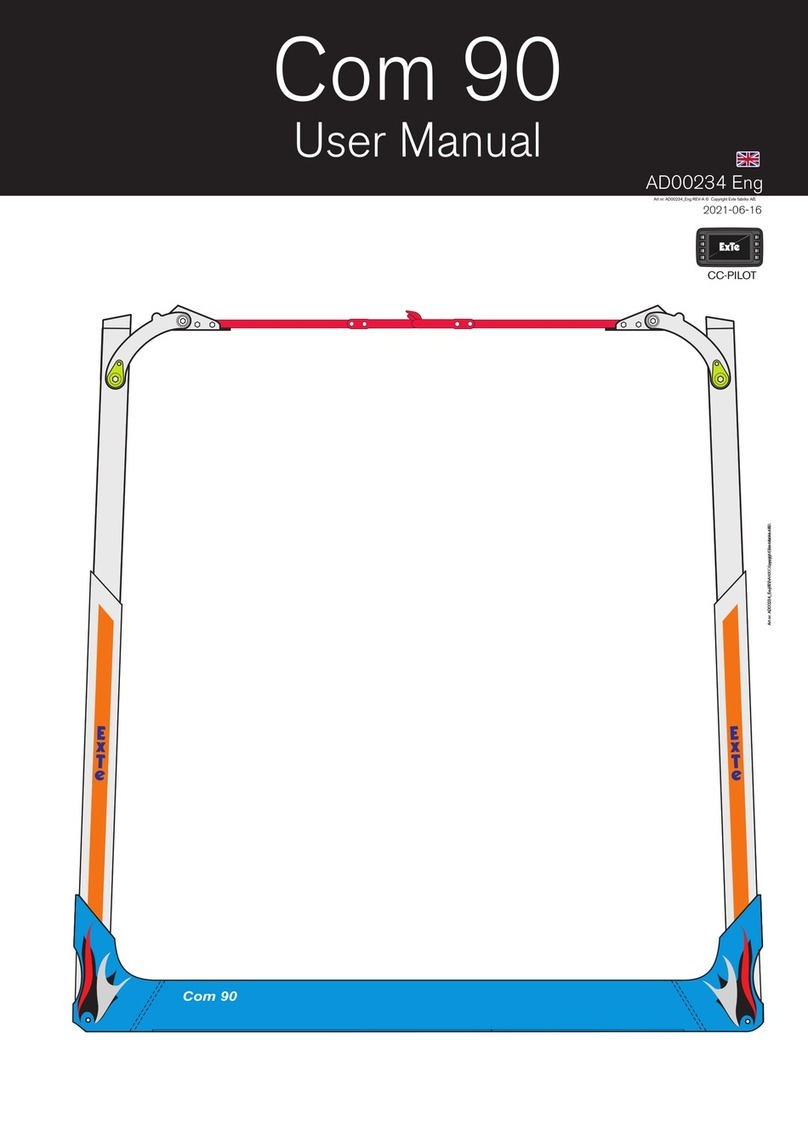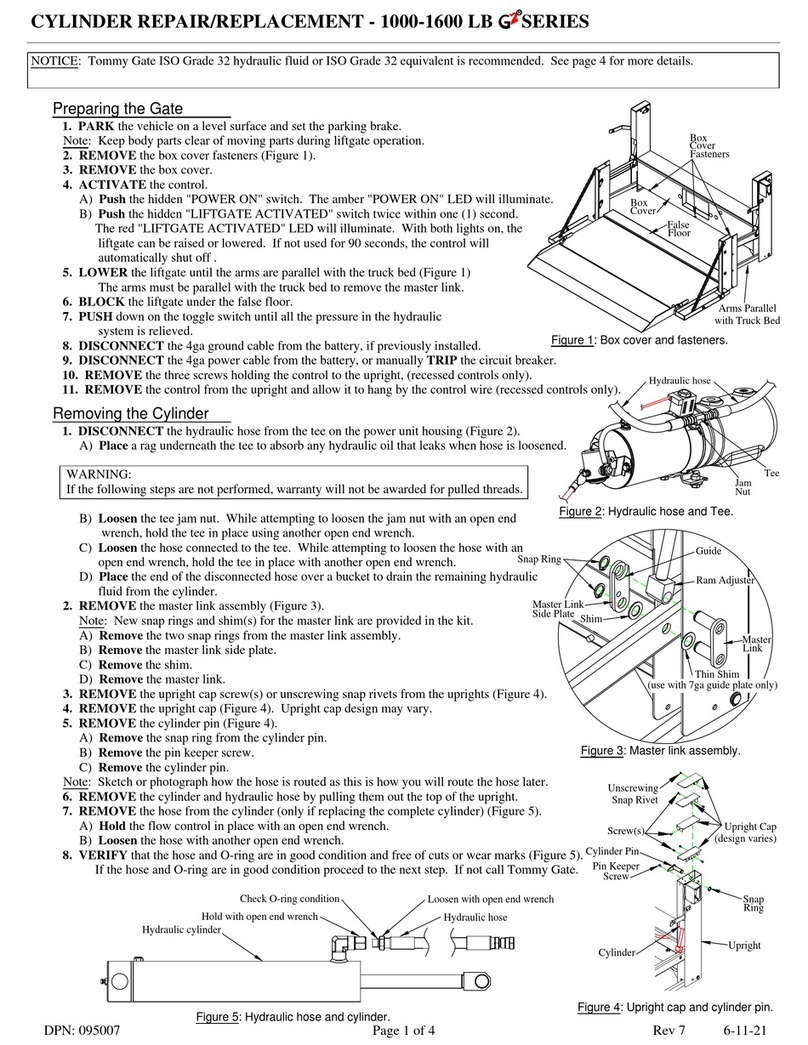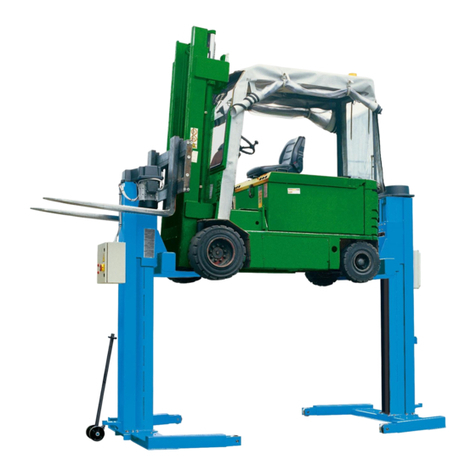
10 CLHM-FLA-IOM (CLHM-185W)
Rev. 3/7/2017
Structural Inspection
Equipment must be removed from service and inspected for damage immediately if subjected to an
abnormal shock or load. Failure to heed this warning may result in personal injury and / or property
damage. WARNING
It is critical that each piece of the adapter and each CLHM lift unit be inspected regularly for any signs
of wear or damage that might affect its ability to perform lifts safely. Any equipment that appears to be
damaged in any way, is found to be badly worn, or operates abnormally must be removed from service
until necessary repairs are made. Call customer service if you need to have equipment serviced or if
you have any questions about how to address any wear or damage observed on the equipment.
The employer, owner, and/or manager are responsible for maintaining the forklift adapter system and CLHM
lift units in good, serviceable condition. Employees must be trained on how to inspect the equipment. Before
each use of a CLHM lift unit, the operator must visually inspect the lift unit for any abnormal conditions. Any
equipment subjected to an abnormal load or shock must be immediately removed from service and given a
thorough inspection. The employer, owner, and/or manager must inspect (or appoint a knowledgeable person to
inspect) all equipment regularly. Regular inspections should be made weekly (if the equipment is used daily)
or monthly (if the equipment is used only intermittently). Regular inspections should include the following:
Check for any visual cracks, chips or other signs of excessive wear on all pieces of the adapter and all
CLHM lift units.
Raise and lower the lift carriage through its full range (up and down)—it should move smoothly. If the
lift stutters when lowering (i.e., it moves in a jerky fashion) the slide pads may need to be re-lubricated.
Refer to the CLHM manual.
Inspect the lift unit slide pad and roller contact surfaces for damage, such as gouging, warping, etc.
All controls should operate smoothly and freely.
Inspect the lift unit for oil leaks. If oil leaks occur, investigate and correct the source of the leakage
(refer to the “Adding Hydraulic Fluid” section of the CLHM manual). WARNING! Clean up any oil
leakage immediately. Oil left on the floor can create a slipping hazard.
Inspect the down stop catch pawl to make certain it rotates forward and backward freely. If the catch
pawl does not move freely it may need to be greased. Refer to the “Maintenance Instructions” section of
the CLHM manual.
Check the positioning of the down stop catch pawl. Refer to the “Maintenance Instructions” section of
the CLHM manual.
If you are not sure whether any identified wear or damage is “serious”, DO NOT use the equipment. The time
it takes to determine whether or not the problem is “serious” or to repair the problem is small compared to the
time it will take to deal with the consequences of a lost load (which could include severe injury or death to
personnel).
For more information about the CLHM lift units, refer to the manual that was furnished with the CLHM lift
units.
WARNING

